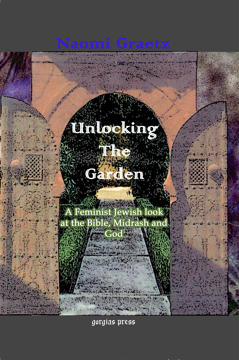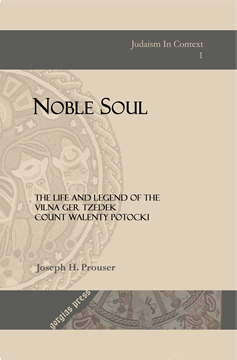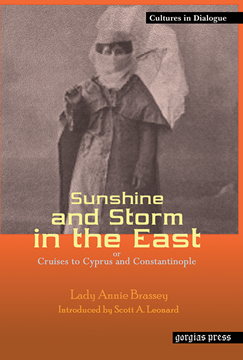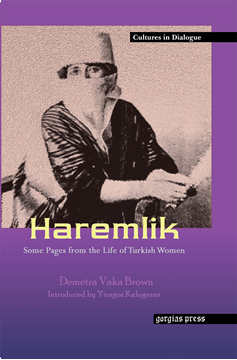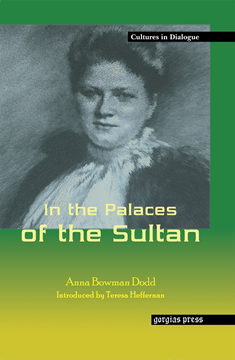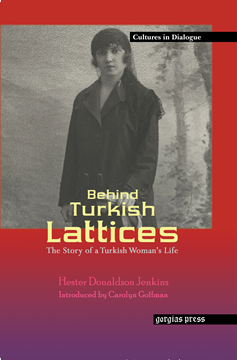The Separated Eastern Churches
By P. Janin
ISBN: 1-59333-110-X
Janin's work gives an account of the various churches of the East, both Byzantine and oriental. The author gives the history and organizational structure for each branch of the church.
$145.00 (USD)
De Catholicis seu Patriarchis Chaldaeorum et Nestorianorum
ISBN: 1-59333-132-0
This book, originally published in Rome in 1775, remains the major reference to the history of the patriarchs of the Church of the East (Chaldean and "Nestorian"). The volume is appended by another work by J.A. Assemani on church unity.
$186.00 (USD)
Unlocking the Garden
A Feminist Jewish Look at the Bible, Midrash, and God
By Naomi Graetz
ISBN: 1-59333-058-8
A stirring collection of fifteen articles, many of which have been previously published by the author who is a feminist Jew. The author unabashedly confronts difficult biblical and midrashic texts, without taking an apologetic stance.
$136.00 (USD)
The Life & Legend of the Vilna Ger Tzedek Count Walenty Potocki
By J. Prouser
Series: Judaism in Context 1
ISBN: 1-59333-097-9
Walenty Potocki was a young Polish nobleman who abandoned wealth, power, and unlimited worldly prospects to convert to new religion - Judaism. Potocki was betrayed by a member of the religious community he embraced and burned at the stake by the Church he left behind in 1749. This book examines eleven versions of this remarkable man’s story and the heated, previously unpublished, correspondence between the Potocki clan and one of his early biographers. Noble Soul is the record of one man’s defining faith, and of the compelling human need for personal spiritual fulfillment.
$144.00 (USD)
Man and the Theogony in the Lurianic Cabala
Series: Gorgias Studies in Judaism 12
ISBN: 1-59333-200-9
Lurianic mythology represents an intensely personal view, in which earlier cabalistic symbolism is used to express new and original ideas. The lurianic corpus can be seen as a metaphor for a relation between man and the deity which is not yet fulfilled. The cabalistic myths of his sources express the reality of the relations of being in the lurianic corpus. The lurianic system seeks to reformulate the relation of man and god, concentrating on the way that the being of the deity is revealed in man.
$140.00 (USD)
Sunshine and Storm in the East, or Cruises to Cyprus and Constantinople (Hardback)
New Introduction by Scott A. Leonard
Series: Cultures in Dialogue: First Series 7
ISBN: 1-59333-202-5
Lady Annie Brassey (1839-1887) possess a keen eye for human interest and narrative detail that propelled her to international fame as a travel writer. This book presents a daily diary of two voyages to Constantinople aboard her family yacht in the mid 1870s. Here, the modern reader may glimpse the natural wonders, cultural distinctions, and political circumstances of such countries as Portugal, Spain, Morocco, Italy, Greece, and Turkey during that time period. Readers will also find an excellent example of the nineteenth-century European fascination with the "Orient."
$217.00 (USD)
Some Pages from the Life of Turkish Women (Hardback)
New Introduction by Yiorgos Kalogeras
Series: Cultures in Dialogue: First Series 2
ISBN: 1-59333-203-3
Born as a Greek Ottoman in Istanbul, Demetra Vaka Brown (1877-1946) moved to America where she became a journalist and novelist, revisiting Turkey to write several books about the twilight of the Ottoman Empire and the emergence of the Turkish Republic. She based this, her first book, on experiences from 1901, when modernization had made inroads into Ottoman domestic life and the harem was becoming a thing of the past. Her reflections on life in the harem suggest the conflicted nature of her allegiances: Vaka is nostalgic for the Ottoman life that was rapidly disappearing, but she also enjoys the freedoms of a professional American woman.
$161.00 (USD)
In the Palaces of the Sultan (Hardback)
New Introduction by Teresa Heffernan
Series: Cultures in Dialogue: First Series 9
ISBN: 1-59333-204-1
As Anna Bowman Dodd (1855-1929), a New York travel writer and journalist, journeyed to Istanbul with the American Ambassador to France she embarked on a detailed account of the city and its people. Interested in documenting the changes in Turkey brought about by the "embrace" of modernity and progress, she considers Turkish women's rights, harems and marriage, the management of the household, education, slavery, the Sultan's reign, and nationalist movements in the last days of the Ottoman Empire. She caters to the American market for Orientalism but is also reflexive about its employment, both invoking and undercutting stereotypes as she addresses the "Eastern Question."
$221.00 (USD)
A Turkish Woman's European Impressions
New Introduction by Reina Lewis
Series: Cultures in Dialogue: First Series 3
ISBN: 1-59333-207-6
Born into the Ottoman Muslim elite, Zeyneb Hanoum and her sister Melek Hanoum were given a Western-style education by their progressive father, who expected them subsequently to live the segregated lives of Ottoman ladies. Rebelling, the sisters collaborated with the French author Pierre Loti, hoping that harnessing European intellectual support would speed up Ottoman social reform. Fleeing Istanbul in 1906 for fear of imperial reprisals, the sisters traveled in disguise to Europe, hoping to find "freedom" in the West. With Zeyneb Hanum's letters punctuated by Grace Ellison's introduction, commentary, and footnotes, this book challenges Orientalist stereotypes and documents the vibrant engagement between Eastern and Western women at the fin de siècle.
$158.00 (USD)
The Story of a Turkish Woman's Life (Hardback)
New Introduction by Carolyn Goffman
Series: Cultures in Dialogue: First Series 8
ISBN: 1-59333-105-3
Hester Donaldson Jenkins (1869-1941), a professor at the American College for Girls in Constantinople from 1900-1909, wrote enthusiastically about the Young Turks who seemed to promise new freedoms for Ottoman women. Jenkins uses her own observations of Constantinople, her students, and their families to construct an account of a "typical" Turkish Muslim woman's life cycle at this turning point in Ottoman history. She directs her comments toward childhood, education, marriage, polygamy, and divorce, in order to correct Western misapprehensions. In its confidence in the bright prospects of American influence and Ottoman reform, this book captures an optimistic moment in which social progress seemed to be thriving.
$149.00 (USD)


